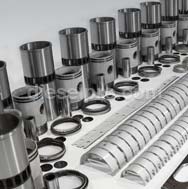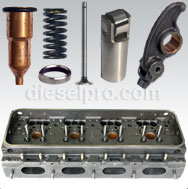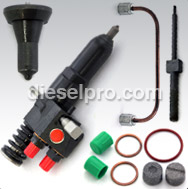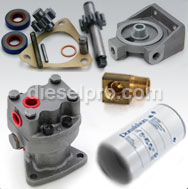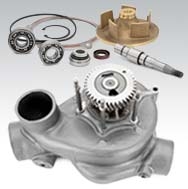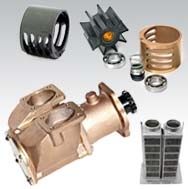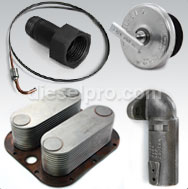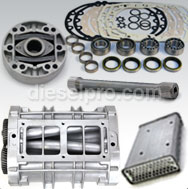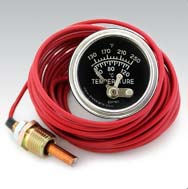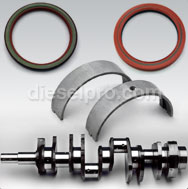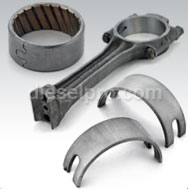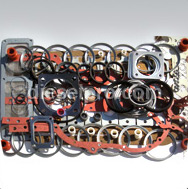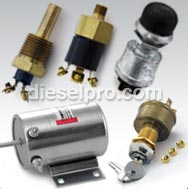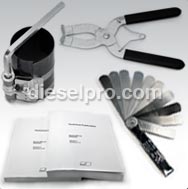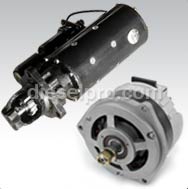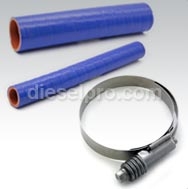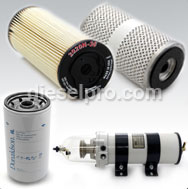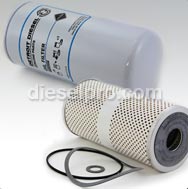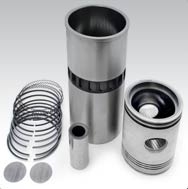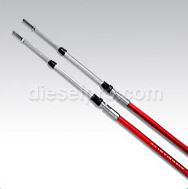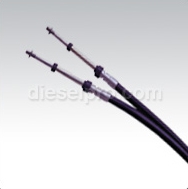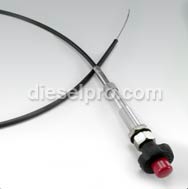The Detroit Diesel 16V71 Naturally Aspirated engine—commonly referred to as the 16V71N or 16V71NA—is the naturally aspirated version of the largest engine in the iconic Detroit Diesel Series 71 family. With sixteen cylinders arranged in a 90-degree V configuration, the 16V71N delivers reliable power through a rugged, mechanically simple design. Without a turbocharger, this two-stroke diesel engine depends entirely on a Roots-type blower to force air into the cylinders, making it a go-to option for heavy-duty marine, industrial, and generator applications where consistent performance and long-term serviceability are top priorities. Diesel Pro Power provides full aftermarket support for the 16V71N, including overhaul kits, fuel injectors, water pumps, gaskets, cylinder heads, and cooling components. The following guide outlines detailed engine specifications and lists typical applications for this powerful naturally aspirated engine. Engine Type: Two-stroke diesel Cylinder Configuration: 16 cylinders, V-type (90°) Displacement: 1,136 cubic inches (18.62 liters) Bore x Stroke: 4.25 in x 5.00 in (108 mm x 127 mm) Crankshaft Bearings: 9 main bearings Cylinder Heads: 8 total (2 cylinders per head) Firing Order: 1R-5R-3R-7R-2R-6R-4R-8R-1L-5L-3L-7L-2L-6L-4L-8L Rotation: Standard or opposite (marine reversible) This robust architecture allows for continuous-duty operation and delivers substantial torque at lower RPM ranges, ideal for demanding industrial and marine conditions. Fuel Delivery: Mechanical unit injectors (one per cylinder) Aspiration: Roots-type blower (no turbocharger) Compression Ratio: Approximately 17:1 Injector Types: Typically N55 or N60; larger sizes may be used for higher output Fuel Consumption: 0.44 to 0.48 lb/HP/hr (load dependent) Air-to-Fuel Ratio: ~18:1 (typical) The naturally aspirated configuration eliminates the complexity of a turbo system while providing reliable air induction through the twin Roots blowers. Horsepower Range: 650 to 800 HP @ 2,100 RPM (dependent on injectors and governor setup) Peak Torque: Approximately 2,100 to 2,400 lb-ft @ 1,200 to 1,600 RPM Governed Speed: 2,100 RPM standard (adjustable to 2,300 RPM with appropriate governors) Idle Speed: 600–650 RPM Naturally aspirated 16V71s produce less horsepower than their turbocharged counterparts but are favored in conditions that require predictable throttle response and fewer mechanical components. Oil Capacity: 14 to 18 gallons (53 to 68 liters) Lubrication Type: Full-flow gear-driven pump with oil cooler Normal Oil Pressure: 40 to 60 psi Coolant System: Water-cooled using heat exchanger or direct keel-cooling Coolant Capacity: 10 to 14 gallons (depending on configuration) Operating Temperature: 170–190°F regulated via thermostats Water Pump: Gear-driven centrifugal type, marine or industrial rated The lubrication and cooling systems are designed for extended use in heavy-duty settings with minimal intervention. Length: ~100 inches Width: ~50 inches Height: ~55 inches Dry Weight: ~4,300 to 4,600 lbs (configuration-dependent) Its size makes it suitable for large installations where space and mounting support are available. Common installations include vessels with heavy displacement or land-based equipment with reinforced subframes. The 16V71N is a trusted powerplant in the commercial marine industry, where steady RPM operation and continuous-duty cycles are essential. It is favored in vessels where simplicity and reliability take precedence over raw speed or acceleration. Push boats and towboats operating on rivers and canals Harbor and docking tugs with low-speed maneuverability Commercial fishing trawlers and scallop boats Research vessels used for long-range deployments Marine dredging equipment and barge pusher units Liveaboard or expedition trawlers that prioritize redundancy and serviceability These engines are often installed in twin configurations to generate combined outputs exceeding 1,300 HP. The lack of a turbo system reduces thermal stress and allows for more stable operation in slow-to-medium-speed marine propulsionenvironments. The naturally aspirated 16V71 is heavily used in stationary or semi-mobile industrial applications that require reliable, long-term power output. Thanks to its mechanical simplicity, it's ideal in regions where electronic diagnostic equipment is scarce or downtime must be avoided. Prime and standby diesel generator sets Water transfer and flood control pumping stations High-volume fire pump systems for industrial safety Frac water and fluid handling systems in oilfields Rock crushers and aggregate processing machines Large air compressors for mining or tunneling applications Cement or asphalt batching plant engines In these environments, the 16V71N’s durability and low-maintenance operation make it cost-effective for long-haul, multi-hour cycles. It thrives in operations where power stability is more important than variable performance. The 16V71N was commonly used in military equipment due to its robust architecture and ability to run without electronics or turbo components. Its role has since shifted to surplus engines that have been repurposed for civilian use, especially in marine and industrial settings. Mobile command post power units Remote communication base generators Field-deployed firewater and diesel pumping systems Military cargo barges and patrol craft propulsion Amphibious transport systems (e.g., floating bridge support units) In many developing regions and small coastal countries, surplus military 16V71N engines have found second lives repowered into fishing fleets or industrial systems. The naturally aspirated 16V71 remains a favorite among custom builders and restoration professionals who value its iconic sound, legacy performance, and the widespread availability of aftermarket support. Yacht and classic vessel restorations Exhibition trucks, hot rod semis, or tractor pullers Off-grid or event-based generator systems Industrial-themed attractions or static displays Civil defense emergency preparedness power stations Though it requires significant space and structure, the engine’s longevity and mechanical simplicity make it ideal for custom platforms where uptime and serviceability are key considerations. Sector Common 16V71N Applications Marine Push boats, fishing trawlers, harbor tugs, expedition yachts Industrial Water pumps, generators, crushers, compressors, oilfield units Military/Government Cargo vessels, field pumps, power units, surplus repowers Custom/Restoration Yachts, exhibition rigs, hot rods, off-grid gensets Mechanically Simple: No turbocharger, ECM, or high-pressure electronics Field-Serviceable: Repairs can be done with basic tools and technician experience Consistent Power: Excellent for steady load profiles and extended runtime Global Availability: Parts and rebuild kits widely available through aftermarket support Legendary Durability: Proven to last tens of thousands of hours when maintained properly Lower Horsepower: Less suited for dynamic acceleration or high-speed applications Larger Footprint: Requires significant space for installation and cooling Noise Level: Noted for its characteristic two-stroke diesel sound, which may be a concern in noise-sensitive environments Marine Detroit Diesel 16V71 Component Maintenance Life Detroit Diesel 16V71 Marine Engine Specifications (Turbo & Non-Turbo) Overview of the Detroit Diesel V71 Series Engines (6V71, 8V71, 12V71, 16V71) General Service Guidelines for Detroit Diesel V71 Series Engines (6V71, 8V71, 12V71, 16V71) Cylinder Block for Detroit Diesel V71 Series Engines (6V71, 8V71, 12V71, 16V71) Cylinder Head for Detroit Diesel V71 Series Engines (6V71, 8V71, 12V71, 16V71) Common Maintenance and Repair Needs for Detroit Diesel V71 Cylinder Heads (6V71, 8V71, 12V71, 16V71) Fuel and Air Systems for Detroit Diesel 6V71, 8V71, 12V71, and 16V71 Engines Injectors Maintenance for Detroit Diesel V71 Engines (6V71, 8V71, 12V71, 16V71) Governor Maintenance for Detroit Diesel V71 Engines (6V71, 8V71, 12V71, 16V71) Blowers Maintenance for Detroit Diesel V71 Engines (6V71, 8V71, 12V71, 16V71) Air Filters Maintenance for Detroit Diesel V71 Engines (6V71, 8V71, 12V71, 16V71) Fuel Leaks Troubleshooting for Detroit Diesel V71 Engines (6V71, 8V71, 12V71, 16V71) Air Intake Restrictions for Detroit Diesel V71 Engines (6V71, 8V71, 12V71, 16V71) Injector Malfunction Troubleshooting for Detroit Diesel V71 Engines (6V71, 8V71, 12V71, 16V71) Lubrication and Cooling Systems for Detroit Diesel 6V71, 8V71, 12V71, and 16V71 Engines Electrical and Exhaust Systems for Detroit Diesel 6V71, 8V71, 12V71, and 16V71 Engines Troubleshooting and Preventive Maintenance for Detroit Diesel 6V71, 8V71, 12V71, and 16V71 Engines Specifications and Torque Tables for Detroit Diesel 6V71, 8V71, 12V71, and 16V71 Engines Safety Considerations for Detroit Diesel 6V71, 8V71, 12V71, and 16V71 Engines Lubrication System: Comprehensive Guide For Detroit Diesel V71 Engines (6V71, 8V71, 12V71, 16V71) Oil Pumps for Detroit Diesel V71 Engines (6V71, 8V71, 12V71, 16V71) Oil Pressure Regulation For Detroit Diesel V71 Engines (6V71, 8V71, 12V71, 16V71) Oil Filters for Detroit Diesel V71 Engines (6V71, 8V71, 12V71, 16V71) Cooling System: Comprehensive Guide For Detroit Diesel V71 Engines (6V71, 8V71, 12V71, 16V71) Types of Cooling Systems for Detroit Diesel V71 Engines (6V71, 8V71, 12V71, 16V71) Key Components of the Cooling System for Detroit Diesel V71 Engines (6V71, 8V71, 12V71, 16V71) Raw Water Pump Specifics for Detroit Diesel V71 Marine Engines (6V71, 8V71, 12V71, 16V71) Importance of Cooling System Maintenance for Detroit Diesel V71 Engines (6V71, 8V71, 12V71, 16V71) Detailed Torque and Specifications For Detroit Diesel V71 Engines (6V71, 8V71, 12V71, 16V71) Step-by-Step Maintenance Procedures For Detroit Diesel V71 Engines (6V71, 8V71, 12V71, 16V71) Oil Pump Removal and Reassembly for Detroit Diesel V71 Engines (6V71, 8V71, 12V71, 16V71) Draining and Refilling the Cooling System For Detroit Diesel V71 Engines (6V71, 8V71, 12V71, 16V71) Troubleshooting Guide For Detroit Diesel V71 Engines (6V71, 8V71, 12V71, 16V71) Complete Parts Catalog for Detroit Diesel V71 Engines (6V71, 8V71, 12V71, 16V71) Comprehensive FAQ for Detroit Diesel V-71 Series Manual (6V71, 8V71, 12V71, 16V71)
Parts for Detroit Diesel 16V71 Non-Turbo
-
Select Parts Category
 Loading...
Loading...
Detroit Diesel 16V71 Naturally Aspirated – Engine Specifications & Applications
Overview
Engine Specifications – Detroit Diesel 16V71 Naturally Aspirated
Core Engine Design
Fuel System and Aspiration
Power and Torque Output
Lubrication and Cooling System
Dimensions and Weight
Applications of the Detroit Diesel 16V71 Naturally Aspirated Engine
Marine Applications
Typical Marine Use Cases
Industrial and Stationary Equipment
Typical Industrial Use Cases
Military and Government Applications
Typical Government Uses
Repower Projects and Custom Installations
Typical Repower Use Cases
Summary: Key Use Cases by Sector
Why Choose the 16V71 Naturally Aspirated Engine
Advantages
Considerations
Additional Resources
Detroit Diesel 6V71, 8V71, 12V71, 16V71 Engine Tune Up



 Free US Calls: 1-888-433-4735
Free US Calls: 1-888-433-4735 International: 305-545-5588
International: 305-545-5588





